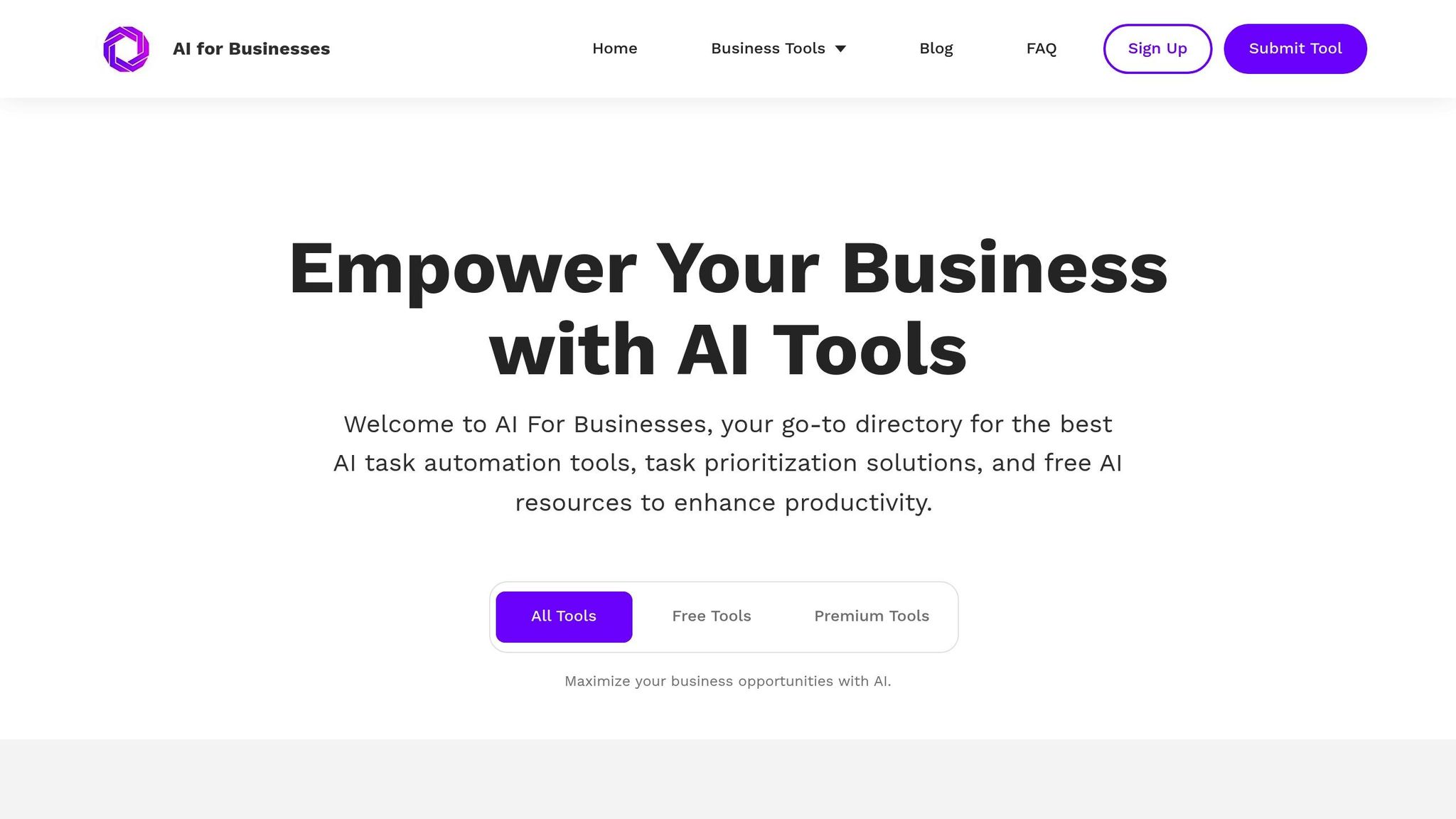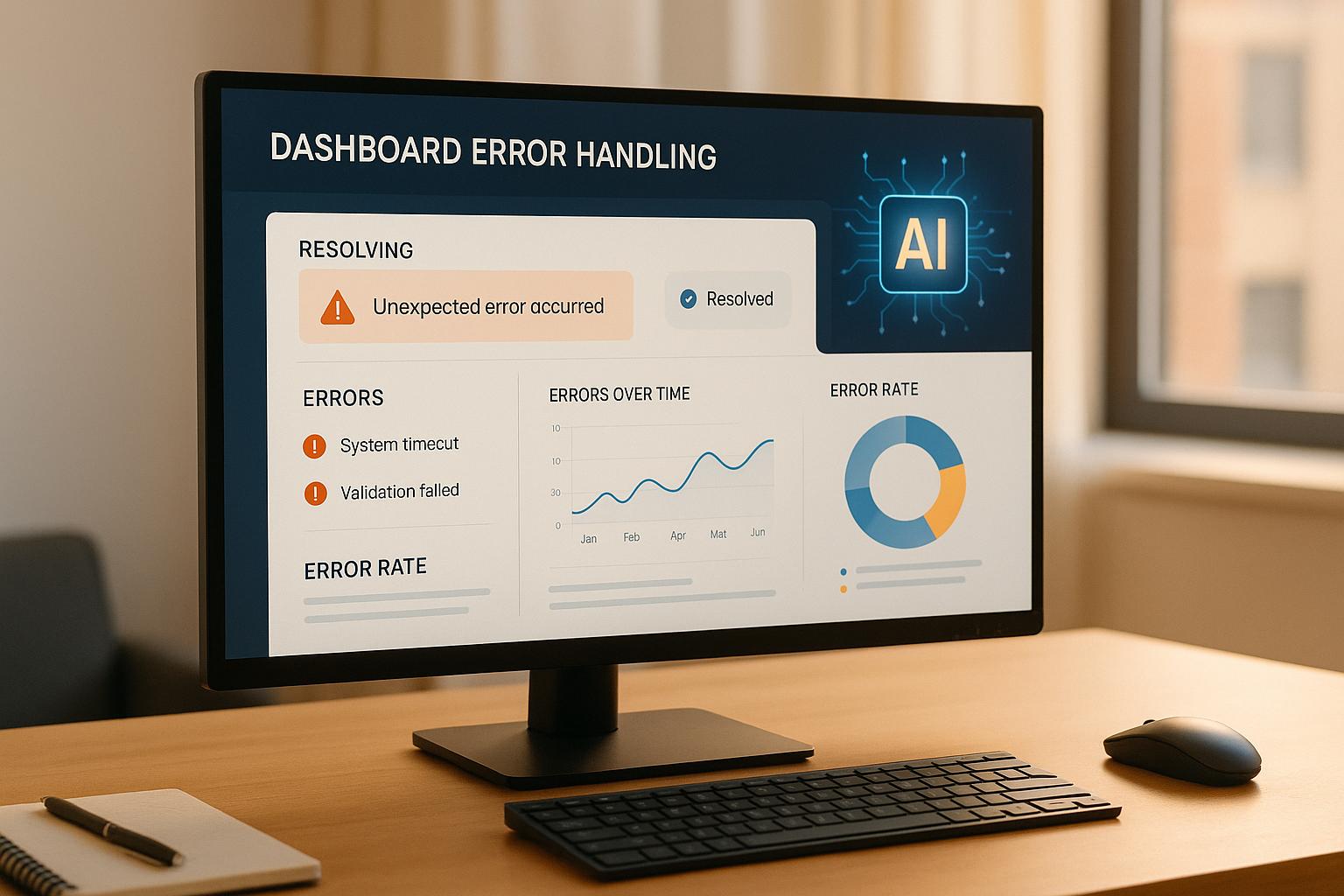AI is transforming how businesses fight malware by detecting and neutralizing threats faster than ever. Traditional security systems can't keep up with evolving cyberattacks, but AI steps in by analyzing behaviors, patterns, and anomalies in real time to stop both known and new threats. Here's how AI strengthens cybersecurity:
- Real-Time Detection: Monitors system activity like file changes, network traffic, and resource usage to flag suspicious behavior instantly.
- Machine Learning: Identifies malware by learning from vast datasets and spotting patterns even in unknown threats.
- Behavioral Analysis: Tracks program actions to detect malicious intent, such as unauthorized file modifications or unusual data transfers.
- Automated Response: AI isolates infected systems, removes harmful files, and repairs damage without human intervention.
Why It Matters:
- Speed: AI handles thousands of threats simultaneously, stopping malware before it spreads.
- Accuracy: Reduces false alarms, so security teams focus on real risks.
- Evolving Defense: Learns from new attacks to stay ahead of cybercriminals.
AI-powered tools are essential for businesses to protect their systems 24/7 without slowing down operations. If you're selecting AI security solutions, prioritize features like real-time monitoring, risk scoring, and automated threat control for maximum protection.
How AI Detects Malware
Core AI Detection Methods
AI-based malware detection goes beyond traditional signature-based methods. Instead of depending only on known malware signatures, AI examines program behavior, code structures, and system interactions in real time. This allows it to identify both familiar threats and completely new attacks.
AI keeps an eye on how programs interact with systems by observing:
- File system activities
- Network data exchanges
- Registry changes
- Memory usage trends
These foundational methods enable more advanced techniques that improve detection accuracy.
AI Detection Techniques
AI uses several approaches to detect malware:
- Machine Learning Classification: Supervised learning models are trained on extensive malware datasets to spot suspicious code patterns. This helps detect new threats by identifying subtle similarities to known malicious code.
- Behavioral Pattern Recognition: AI analyzes system behaviors, such as those listed above, to create profiles that identify malicious activity - even for unknown malware variants.
| Behavior Type | What AI Monitors | Risk Indicators |
|---|---|---|
| System Access | File operations, registry changes | Unauthorized modifications |
| Network Activity | Connection patterns, data transfer | Suspicious outbound traffic |
| Resource Usage | CPU, memory, disk activity | Unusual resource consumption |
| User Interaction | Login attempts, privilege escalation | Unauthorized access attempts |
- Heuristic Analysis: AI applies advanced rules to evaluate program characteristics and behaviors against known malware patterns. This helps detect potential threats before they can cause damage.
Advantages of AI Detection
AI brings several benefits compared to traditional malware detection methods:
- Speed and Scale: AI can analyze thousands of threats simultaneously, providing near-instant detection. This is critical since modern malware can spread across networks at alarming speeds.
- Continuous Learning: By learning from new threats, AI systems stay effective against evolving malware and attack methods.
- Fewer False Positives: Sophisticated pattern recognition and context-based analysis reduce the number of false alarms, allowing security teams to focus on real threats instead of harmless activities flagged incorrectly.
AI Threat Response System
24/7 Threat Monitoring
AI-powered security systems keep a constant watch on network and system activity, using advanced monitoring techniques. They analyze various data streams at the same time - like network traffic, system resource usage, file changes, login attempts, and process behaviors - to spot potential threats. This round-the-clock vigilance allows for quick identification and prioritization of risks.
Threat Assessment
When suspicious activity is detected, the AI evaluates the threat by assigning a multi-factor risk score. It considers factors like the severity of the behavior and how widely it could spread. If the risk score crosses a set threshold, the system acts immediately to contain the issue. This automated process ensures that high-priority threats are addressed right away, while less critical ones are handled methodically. By clearly defining risks, the system takes precise actions to counter them.
Automatic Threat Control
Once a threat is identified, the AI takes immediate action to contain and eliminate it. It isolates affected systems, shuts down harmful processes, removes compromised files, and repairs any changes made by the threat. After resolving the issue, the system checks for lingering signs of the attack, ensures everything is functioning correctly, and gradually restores access to the network. Detailed logs of every step are created, giving security teams the tools to analyze and improve response strategies.
AI vs New Malware Types
AI Learning Process
AI security systems are constantly evolving, thanks to machine learning. By analyzing thousands of samples daily, these systems identify new threat patterns. The process involves breaking down malware into key components, such as:
- Code structure: Analyzing programming patterns and structures.
- Behavior monitoring: Observing how malware interacts with systems.
- Network activity: Detecting unusual data transfers.
- System changes: Watching for unauthorized modifications to critical files.
This detailed examination helps the system build a growing database of threat indicators. These insights are then used to automate responses, neutralizing threats as they happen. Over time, this data improves the system's detection models, allowing it to block threats before they can cause harm.
Preventing New Threats
AI systems take a proactive approach to combating malware. Using predictive analysis, they can identify suspicious behavior that resembles known threats, even if the malware itself is entirely new.
Some key strategies include:
- Real-time monitoring: Scanning active code to spot unusual patterns.
- Anomaly detection: Flagging behavior that deviates from the norm.
- Behavioral blocking: Stopping actions that match known threat profiles.
This approach is particularly effective against polymorphic malware, which constantly changes its form. By focusing on patterns rather than static signatures, AI systems can detect and block these evolving threats, staying one step ahead of attackers.
sbb-itb-bec6a7e
AI vs. AI | Automating Cybersecurity to Combat AI-Powered ...
Selecting AI Security Tools
Choosing AI-based malware protection requires a close look at key features and how well the solution integrates with your systems. In today's fast-changing cyber threat landscape, it's crucial to pick tools that can keep up with emerging challenges. This aligns with earlier discussions on AI-powered detection and response strategies.
AI for Businesses: SME Solutions

Small and medium-sized businesses (SMEs) often need cybersecurity that balances affordability with effectiveness. AI for Businesses focuses on offering budget-friendly AI security tools that integrate smoothly into existing systems. When reviewing options, pay close attention to how well they integrate with your current setup.
Key Features to Look For
To tackle malware threats effectively, AI security tools should include certain core features. Here's a breakdown of what to prioritize:
| Feature Category | Key Components | Business Impact |
|---|---|---|
| Live Monitoring | Real-time threat detection, network traffic analysis, system behavior tracking | Quick identification of threats |
| Threat Assessment | Risk scoring, impact analysis, context-aware evaluation | Helps prioritize responses |
| Automatic Response | Malware quarantine, system isolation, threat neutralization | Minimizes response time |
Focus on solutions that offer automated threat response. This feature allows the system to act immediately against threats without requiring constant human oversight.
Lastly, ensure the tools you choose provide strong monitoring and automatic responses without slowing down your systems.
Conclusion: AI Security Benefits
Key Takeaways
AI-driven security is changing the game for business cybersecurity. Key perks include automation, quick response times, and constant monitoring. These tools adapt to new threats, offering a defense system that keeps pace with the latest challenges.
How to Get Started
To make the most of these advantages, follow this phased approach:
| Phase | Actions to Take | Results to Expect |
|---|---|---|
| Assessment | Identify gaps and assess your security needs | A clear picture of what protection you need |
| Tool Selection | Pick AI tools with automated response features | Easier integration into your workflows |
| Integration | Incorporate AI tools into your existing setup | Better threat detection and faster responses |
| Monitoring | Set up ongoing performance checks | Stronger security and better threat prevention |
For small and medium-sized businesses, platforms like AI for Businesses offer a range of AI security tools. These tools neutralize malware effectively and are budget-friendly, providing enterprise-level security without breaking the bank.


